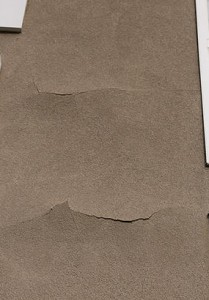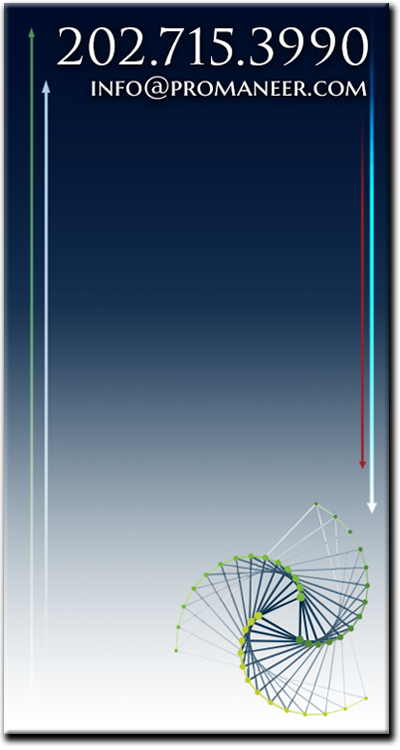One of the most common problems with building sign bands is water infiltration due to improperly installed signs. Many sign bands are constructed of EIFS (Exterior Insulation Finishing System) and incorrectly mounted signs can lead to internal wall damage. As a landlord or property manager if your leases do not contain detailed sign criteria as part of your lease documents, including signage mounting details, then you should carefully review the tenants’ shop drawings to make sure the mounting details are appropriate for your sign band and meet the requirements of the wall finish manufacturer – especially non-drainable EIFS.
Nearly every lease obligates the tenant to repair damage to the LL’s sign band, but the inspection for damage conducted by or on behalf of the LL is not always looking for indications of internal damage caused by water infiltration. Most of the time, the inspections are made from the ground looking for visible fractures, scarring, and surface injuries to the sign band. Rarely is an up-close examination performed which usually necessitates a lift and can be rather impractical cost-wise. However, the damage that can be advancing behind the sign band and out of sight can be serious.
Owners and managers of a large portfolio of retail leased properties stipulate in their leases the signage mounting details on their sign bands because at some point they have encountered the problems that can be caused by faulty sign installations by tenants. It’s usually not the tenant per se as much as the sign fabricator and/or installer responsible for the sign mounting design and its installation. Except for more sophisticated retailers most tenants are not reviewing their sign vendor’s shop drawings for the appropriate mounting details and then inspecting the attachment details in the field. They rely on the expertise of their hired sign vendor, but it is never a bad idea for you to double-check to make certain the proper mounting details have made it onto the shop drawings before you approve the tenant’s signage for installation. Without those details to which to refer to later should any future be discovered you are in a more difficult position to argue against the tenant’s defense of having LL-approved shop drawings for their signage.
What should you look for in the sign mounting details on the shop drawings? For EIFS sign bands, manufacturers such as Sto Corp and Dryvit Systems, Inc. publish technical literature that includes section-drawing details for typical signage installation on their products. Promaneer has assisted property owners by incorporating the respective sections in their lease documents. You can also require that the tenant’s sign vendor include such in their drawing details if not part of your standard lease exhibits.
Signage mounted on non-drainable EIFS must “stand-off” of the surface of the EIFS – typically ½” clearance so as not to trap any water or condensation between the back of the signage and the face of the EIFS. This requires “stand-offs” or sleeves on the mounting anchor bolts to keep the sign from being drawn up against the face of the EIFS while the bolts are tightened during the install. Surprisingly few signs are mounted this way as required by the EIFS technical literature. Only when lettered signs are “halo-lit” or reverse channel lit are stand-offs incorporated by default for the signage lighting, and not so much for the EIFS. Raceways on which the sign lettering or the sign itself is mounted should not be considered a stand-off. Most raceways for signage are fastened tight against the sign band surface, even directly againt EIFS. Raceways against the face of the EIFS are contrary to the manufacturer’s details and can lead to water penetrating behind the surface of the EIFS.
The sign anchor bolts and the accompanying sleeves must also be properly caulked and sealed to prevent rainwater from migrating through these penetrations and into the substrate. While the consequences of not doing this may not be immediately evident, the harm can go unnoticed for some time until the damage is extensive enough to be obvious. Loss of bond of the EIFS laminae (base and finish coats) is often due to moisture in the substrate (see inset), which usually will have already advanced to the wall sheathing by the time the laminae blisters.
Water can enter behind the EIFS laminae at numerous points for any one property, but through the penetrations such as at building signage anchor bolts is one area that can prevented with the correct installation details. Depending upon the orientation of your building the problem could be more or less acute. Northward-facing building facades may not dry out water trapped behind signage as quickly as southern-facing facades. Westward-facing may encounter more driving rain and wind than eastward-facing sign bands. Architectural features, roofing details, and adjacent fenestration also are all factors in how efficiently a façade sheds precipitation, or conversely holds it in certain locations.
To preserve your building’s sign band, keep a close watch on the signage installs, and just as importantly the documentation for how they are to be installed. It’s time invested in helping prevent costly problems later.
